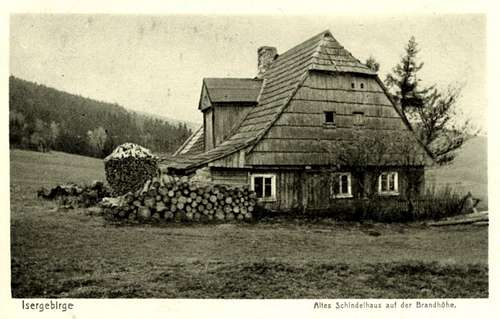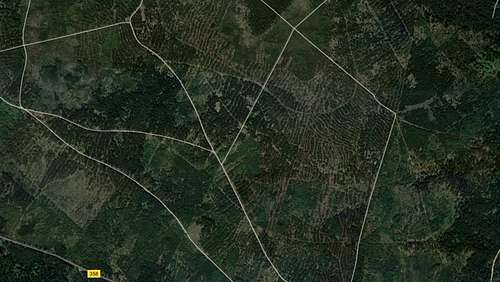-
 1186 Hits
1186 Hits
-
 72.08% Score
72.08% Score
-
 2 Votes
2 Votes
|
|
Album |
|---|---|
|
|
Informational |


Mountains, waters, forests – three highly linked components of natural environment
Forests, peat bogs and swamps are the most important terrestrial ecosystems for water retention. The current trend of climate change, characterized by an increase in temperature and an increase in the frequency of droughts, requires people to take special care of water retention on lands. Water treatments should begin on the mountain tops, where it start to flow down to the lowlands. The mountains are characterized by rapid runoff of rain and melt water causing floods in the lowlands. From the summits downwards, all overgrown surfaces can stop water: swamp pastures, mountain pine thickets, forests and peat bogs. The latter are formed both on flat mountain tops or on slopes as suspended structures. However, forests have the greatest water retention potential, in the tree crowns, in young trees, in undergrowth plants, in litter, and above all in the forest soil. People who walk in the mountains, who love them, cannot be indifferent to the above problem. We, SummitPost members, let's see what happens to the forests in "our" mountains.
In the past, the Izera Mountains, like other mountains, were heavily forested. The harsh climate of these mountains allowed only certain plants to develop in their upper parts. Here, at a much lower altitude than in other mountains, mountain pine grows. The lower parts were covered with mixed beech and fir forests with sycamore, and in the higher parts there was spruce forest. In general, the area of Izera Mts. lies mainly on the level of natural deciduous forests and only a part of Wysoki Grzbiet is on the level of natural coniferous trees. In the 17th century and later, beech and sycamore forests were used up by numerous glass and metal works. Each farm also needed significant amounts of wood for its functioning. The mountains have been shaved from the forests. In the 19th century and later, the forests of the Izera Mountains were restored with the monoculture of spruce. This is shown by photos on old postcards. Every monoculture is susceptible to destruction by biotic and abiotic factors. This is what happened in the 1970s and 1980s due to the activities of the large industrial region of Czechoslovakia, DDR and Poland, at the border of these countries in the so-called the "black triangle". Next, pests have entered the weakened trees. Since 1978, weaken forests were invaded firstly by a small moth Larch Tortrix, Zeiraphera griseana and next by Bark Beetle, Ips typograhus. The forests of the Izera Mts., the Karkonosze Mts. and further east were destroyed in a disaster.The Izera Mts. have been completely abandoned by tourists. The image of mountains was sad and even terrible. Many woodcutters, also from Romania, cleared this area of dead trees. Nobody visited this place. No bird, no viper, no mushroom was seen on devastated surfaces. Next, a revitalization of these mountains started due in part to European Union funds. Slopes were forested by new species like beech, Sorbus aucuparia, birch and larch. In the lower parts, near streams Alnus glutinosa and A. incana were introduced. On summits, where thick snow cover lies through a long time, shrubs of Pinus montana were planted. At present, only in some parts, we can observe signs of the past disaster, e.g. on summits of Smrek Mt., Wysoki Kamień Mt. or Kamienica Mt. Unfortunately, there are also stumbles along this revitalisation path. The most important thing is to keep the water retention, which will make new plantings much easier. This applies in particular to dead wood removed from the forest. This dead wood forms a retention layer when left in situ.
In the area of the Izera Mts., in 2004, it was established by foresters the 'Western Sudetes' Promotional Forest Complex. The Forest Promotional Complexes in Poland are to be reference areas showing the beauty of forests and appropriate methods of their use and protection. Unfortunately, at present, I have observed a significant felling of spruce stored along the hiking trails. Also beeches and larches were cut down. This picture is in complete contrast to the popularising activity of foresters regarding the environmental value of forests, their beauty and the efforts of foresters to restore them. What are the reasons for this felling in forests so recently damaged? If we do cut, leave a significant part of the wood in the forest! However, the felled wood was taken away by large vehicles and the trails were eroded by them. The image of a horse used for logging stumps is unique in these mountains, and yet this is how wood should be harvested from forests. In addition, the forests of the Izera Mts. are destroyed by strong winds, by pyramids of snow and ice forming on the trees, and young plantings by an ice plate formed on melting snow.
The Izera Mountains in the Czech Republic and Poland have a dense network of hiking trails, including for bikers. Unfortunately, I watched the forest clearance and the formation of a slope for a new trail for bikers. It should be remembered that excessive tourist activity in the mountains degrades them. In addition, the destruction of trails in peat bogs by bikers and cross-country motorcyclists is also worrying. These routes are not properly secured. It is completely different in Jizerské Hory in the Czech Republic. It should be emphasized that the peat bogs of the Izera Mountains are protected as a Natura 2000 site. During droughts, peat bogs dry up, and it is difficult to notice any work of foresters aimed at retaining water in the peatlands. So, what is the term Natura 2000 in the Izera Mountains, the media slogan?
Some forecasts say about the disappearance of highland forests in the Western Sudetes, and the forest border will decrease by 100-200 m. I refer to the forecasts with a reasonable distance, but the deforestation of many areas in the Polish mountains and highlands due to the weakening of spruce forests by droughts and subsequent bark beetle attack indicates that the forecasts are becoming realistic.
In conclusion, it should be stated that any human activity aimed to obtain anything from the forest destroys it and degrades the natural environment. No media spells change this truth.




Add External Links text here.

